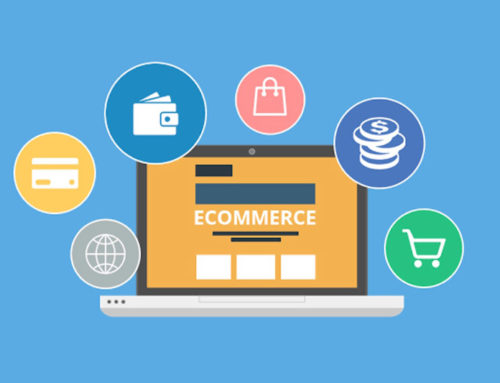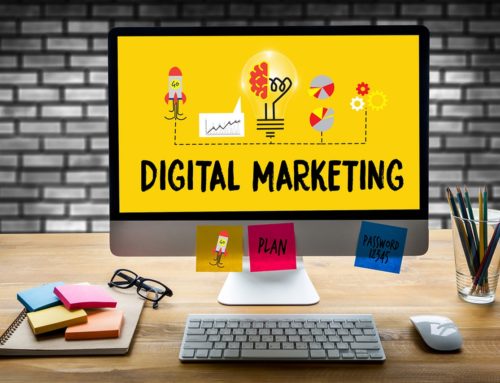Four Ways to Scale Your Business Effectively
Whichever way you want your business to grow, there are many practical considerations to make before taking the next step. Some of these will be easier to implement than others; however, poor planning will always reduce the efficacy and successful implementation of even the greatest business goals. Here are four ways to scale your business effectively:
1) DIGITAL-FACING TECHNIQUES
Effective SEO and PPC Techniques
SEO has become more technical than it used to be. No longer are regular SEO strategies such as link-building, keyword optimisation and decent content enough, a business now must contend with the changing nature of the Google search engine. Google has been making consistent changes to its algorithm and adding to it with small tweaks that are meant to make the general experience better for users (think BERT or RankBrain). Search intent is Google’s number one priority and even if your content is good, if it doesn’t meet the intent that the user is searching for, they will click out of your site. This increases bounce rate and decreases conversions, which is not an effect that you want.
Rather, focus on fulfilling multiple touchpoints in the user journey by:
- Giving the user content in different forms from how-to videos on your YouTube channel (which you also embed onsite)
- Creating informative blog posts (even gossip must be informative to some degree)
- Constantly updating your content strategy to keep it fresh and relevant
- Listing your business’s physical details on Google My Business
- Generally taking account of how your content is presented and in what forms.
Google will aggregate this useful information in the form of featured snippets and your site could not only rank higher in these feature snippets than it would as a traditional link, but featured snippets have a better click-through-rate (CTR).
Once customers are on your site and they can see some sort of value-add which is not a cash-grab, they will more than likely be open to you cross-selling them your product for the valuable information you gave them. You can then lead them through your conversion funnel to the point where you can make a sale.
In terms of PPC, optimising your keyword strategy and getting an ad which works in tandem with your organic SEO efforts is key. A lot of times, when people perform a longtail keyword search or conversational search (which has become the de-facto search method from searchers since it’s much more targeted and specific), they seldom look at the ads at the top of the page. For instance, a cursory search for “amazing pizza” on the Google ZA site shows no ads at all, simply a featured snippet with “pizza places near me”, a Google map, the pizza places’ details, ratings and images of their pizzas. The search results are very much organic since your PPC keywords are limited and “amazing pizza” probably had too little search volume for you to target. This is why it should be reiterated that you focus more on organic SEO but still target PPC where necessary.
2) CUSTOMER RELATIONS MANAGEMENT
Leverage Social Media
Although traditional PR hasn’t fallen to the wayside yet, there are new channels and platforms which bring you closer to your customer and communicate what your brand or company wants to say directly, namely social media. Social media will help customers connect to your brand and if your brand makes a product which requires it to appeal to the senses such as clothing, food or gadgets; posting your product on social media may boost your sales. You can use paid ads on Facebook, LinkedIn, Instagram or Pinterest, but again, it comes back to an organic customer-brand relationship. People should not feel like your product is being forced on them or they are being coerced in some way. The customer needs far outweigh the needs of your sales team. What this means is that engagement with the customer is key, here. Because everything on social media operates in real-time, you can have true engagement near-instantaneously.
For example, a customer sees a product they like, they ask you the price and whether you have it in their size, while they are on the social media platform. They have not yet gone off the social media platform and searched Google or gone to a store site that carries your brand. This is a wonderful opportunity to point them to your site; maybe another social media account as well, such as Instagram or Pinterest where you have curated similar products which they may find useful and visually appealing; and then also direct them their nearest dealer or branch. All that information given in one go provides an immense amount of value, giving your brand a good name and ultimately, leading the customer towards your conversion funnel. You can also answer other common user questions in this way, build a database of them and then use the most common questions to build a product-specific FAQ Page on your site, adding further value.
3) LEGAL, REGULATORY AND COMPLIANCE-BASED CONSIDERATIONS
The bigger your company becomes, the more ensuing red-tape. What this means is not that your company becomes a bureaucracy but that it becomes subject to bureaucratic procedures. To make sure that everything remains above board and that your ship keeps moving forward, you will need to make sure that you hire professionals who can advise you in terms of legislation, regulations and compliance. This is important for a number of reasons:
If you break the law, the company may become jeopardised, sometimes leading to individuals within the company facing legal issues. You will need at least two lawyers to begin with, each specialising in an aspect of business law most important to your company. If you are in shipping for example, a lawyer well-versed in maritime law would be important to your organisation. You would then also need a corporate lawyer to make sure that your business adheres to national legislation and provincial regulations.
Within your company, you will need a compliance officer, or you will need to hire a compliance consultant. This person will make sure that your internal policies, including the day-to-day running of your company are compliant with industry standards and regulations.
4) LOGISTICAL CONSIDERATIONS
Last, but certainly not least, you need to consider the logistics of your product or service offering. You want to turn your one restaurant into a franchise? You want to scale your sales of a certain product from provincial to national? You’ll need people who are skilled at supply chain management. These are the people who will be able to help you scale your business because they can focus on the flow of goods and services from raw materials to final products. They can gauge how much you’ll need for your operations, without running you over-budget or losing you customers. They help you maintain the quality and quantity of your raw materials so that your organisation can keep running, but they do this in the most economical and efficient way possible. A supply chain manager will control the logistics of the supply chain from internal inventory, internal production, to distribution, sales and even keep an eye on the inventory of your company’s suppliers. If your own suppliers are running low on something, the supply chain manager, mitigates the situation by sourcing the same materials at a similar cost to make sure operations don’t stall and there is not a change in output quality.
One of the easiest ways to upskill an existing employee into the supply chain management role is to sign them up for an online short course in supply chain management. After this, they might be able to help your business make the correct decisions to make it grow. Also, you would be advised to take someone who is already occupying a role in logistics as they will already have a general understanding of your business’s existing supply chain. The course would only be helping them to refine their skills and have a more formal methodology as to how they approach the supply chain process.
In terms of employees, your human resources department or an external human capital consultancy can help you handle hiring new people, training them (where required) and deploying them in your workforce.
Finally, for building space, you need to consider location, size and functionality. Depending on your organisational needs, you may need to find a warehouse to run production, a separate office space for sales and other management etc. – it all depends on your specific business needs.











